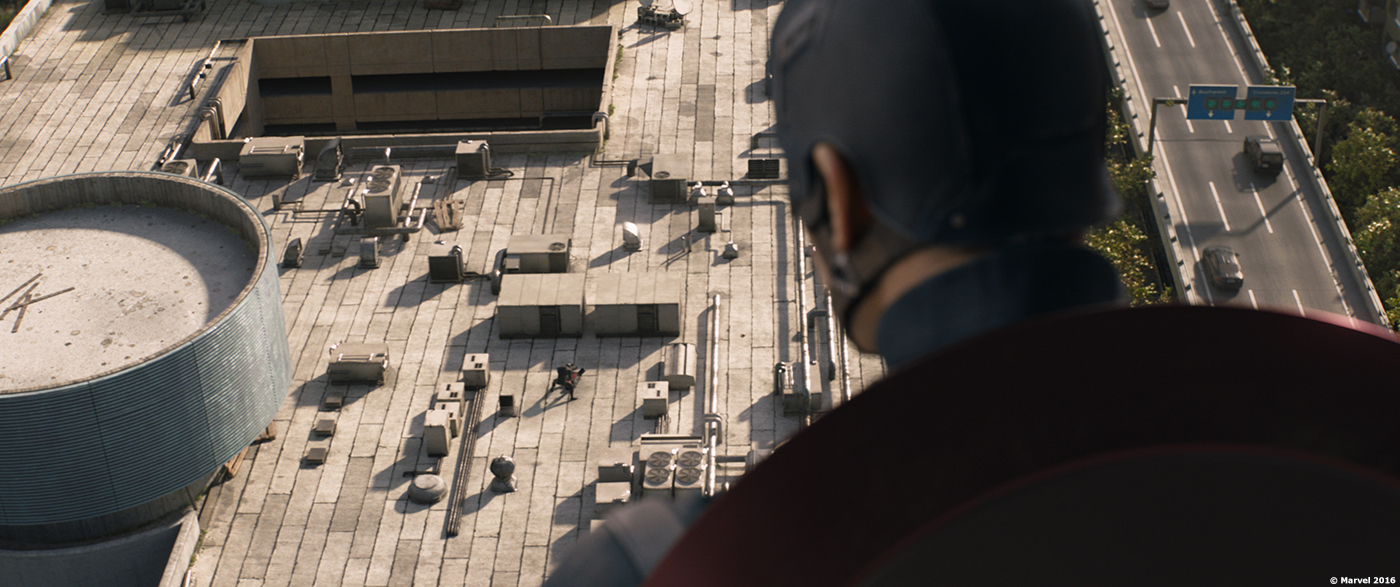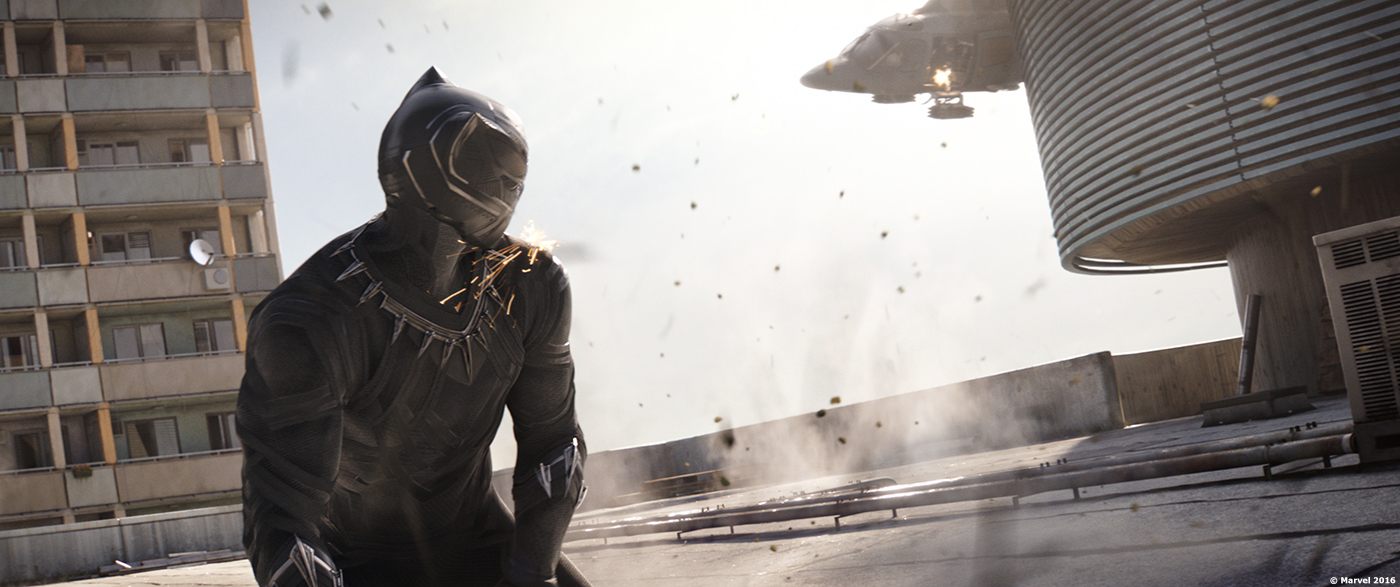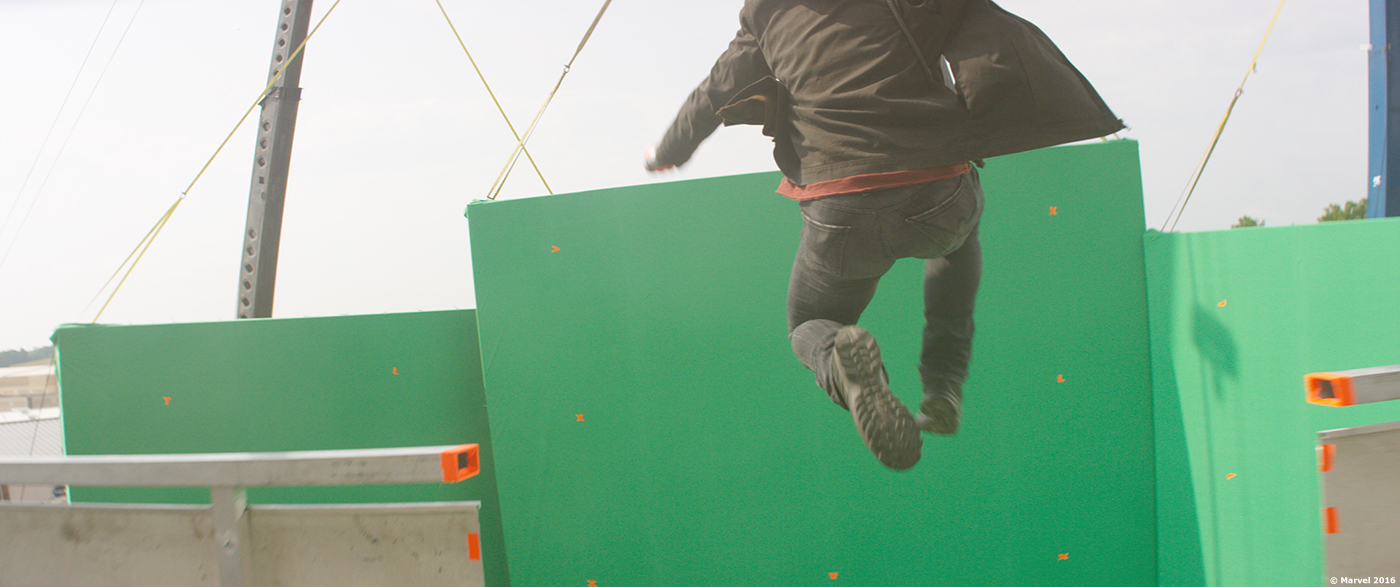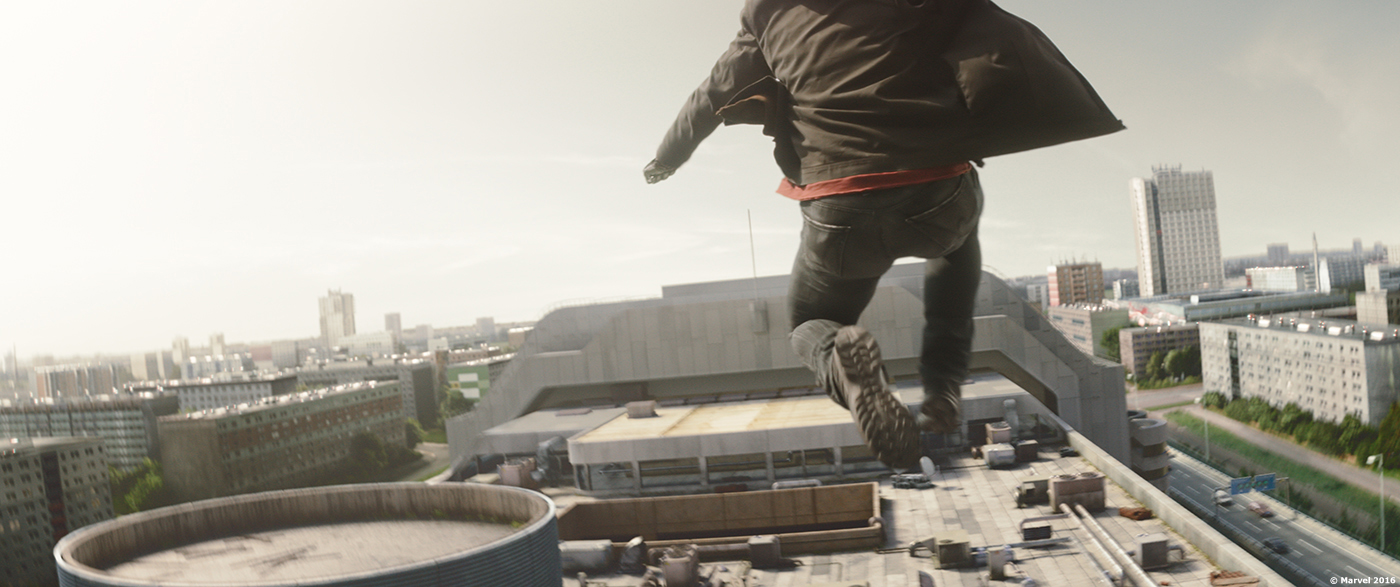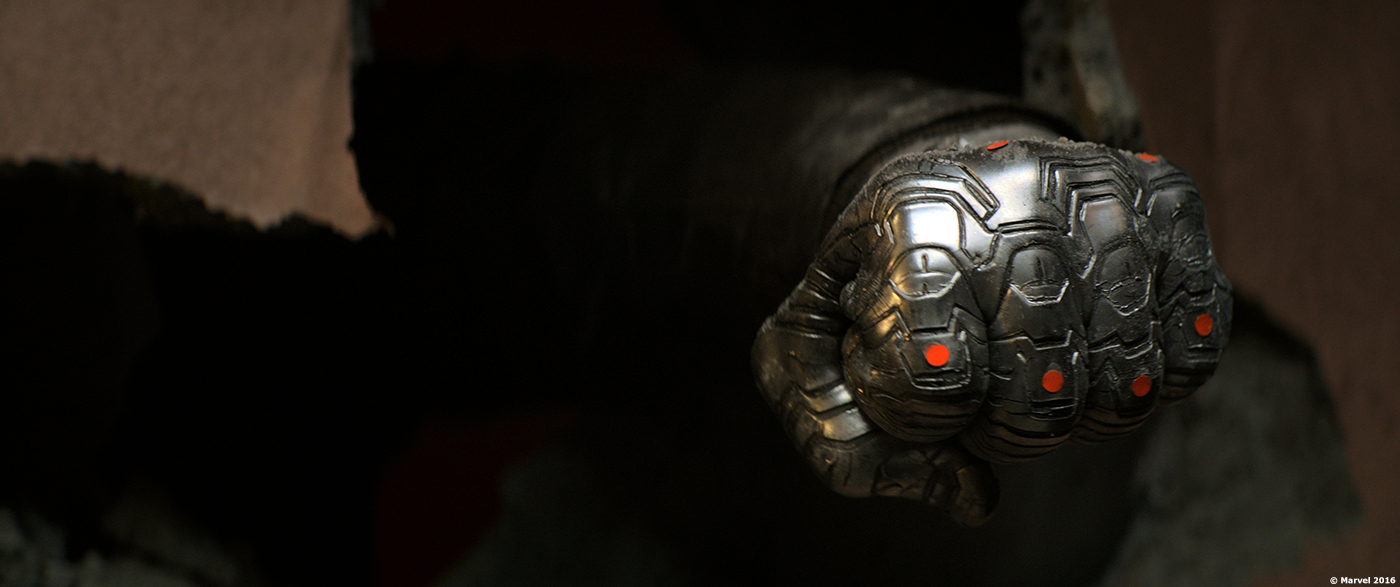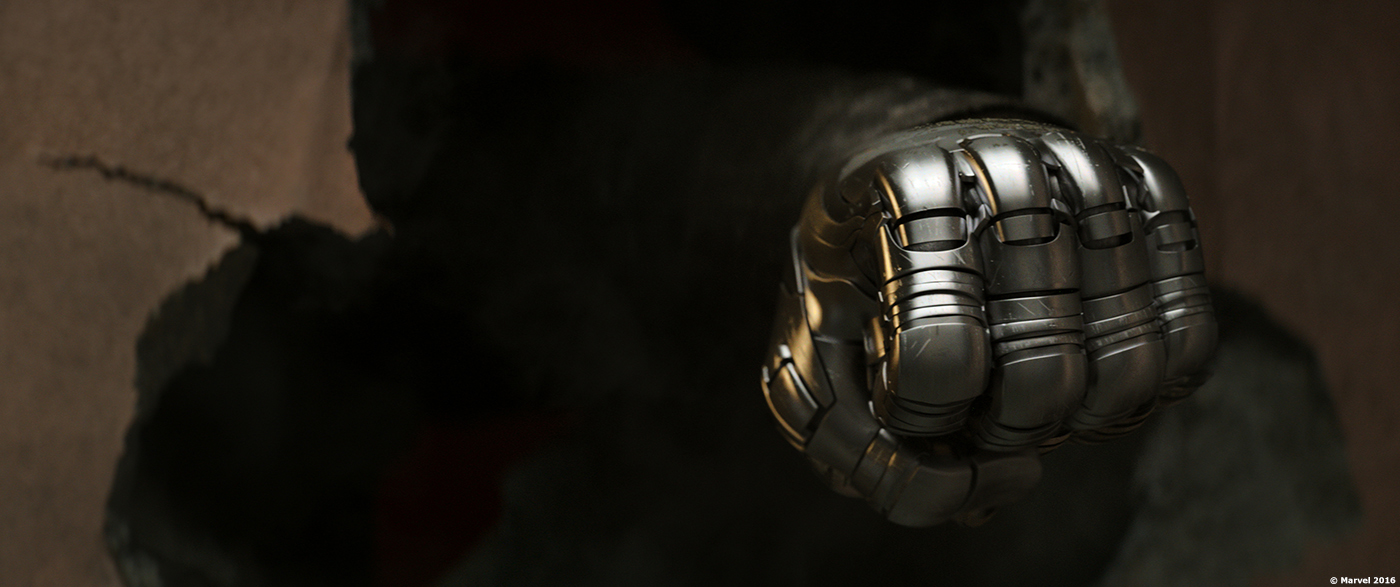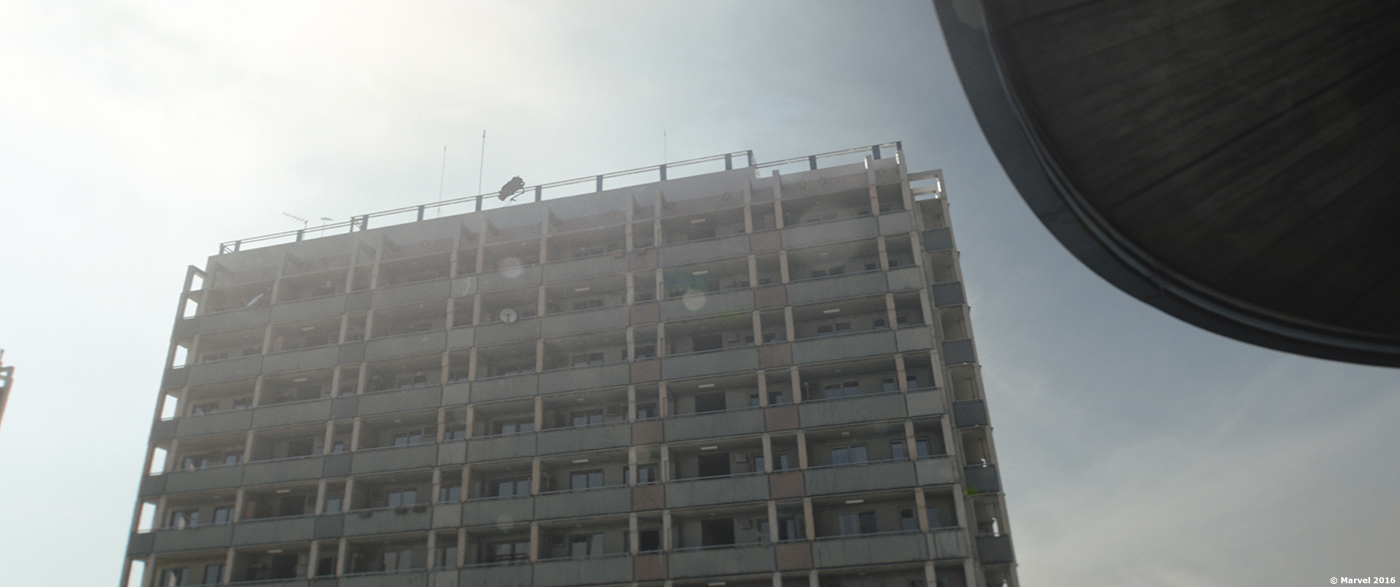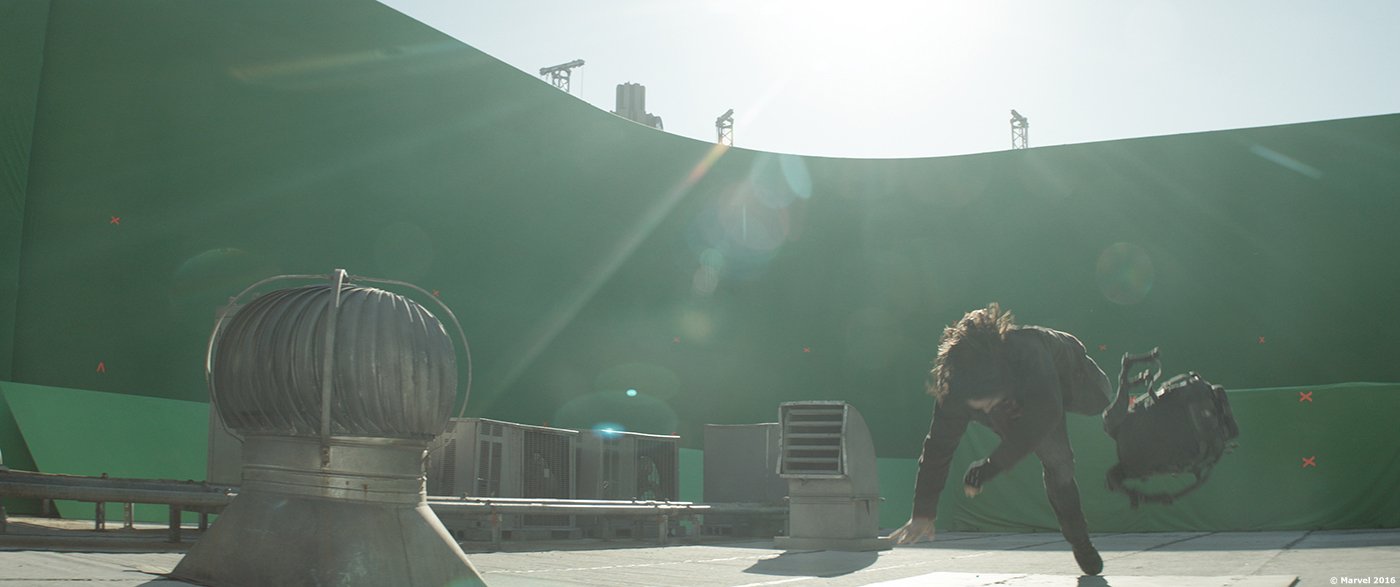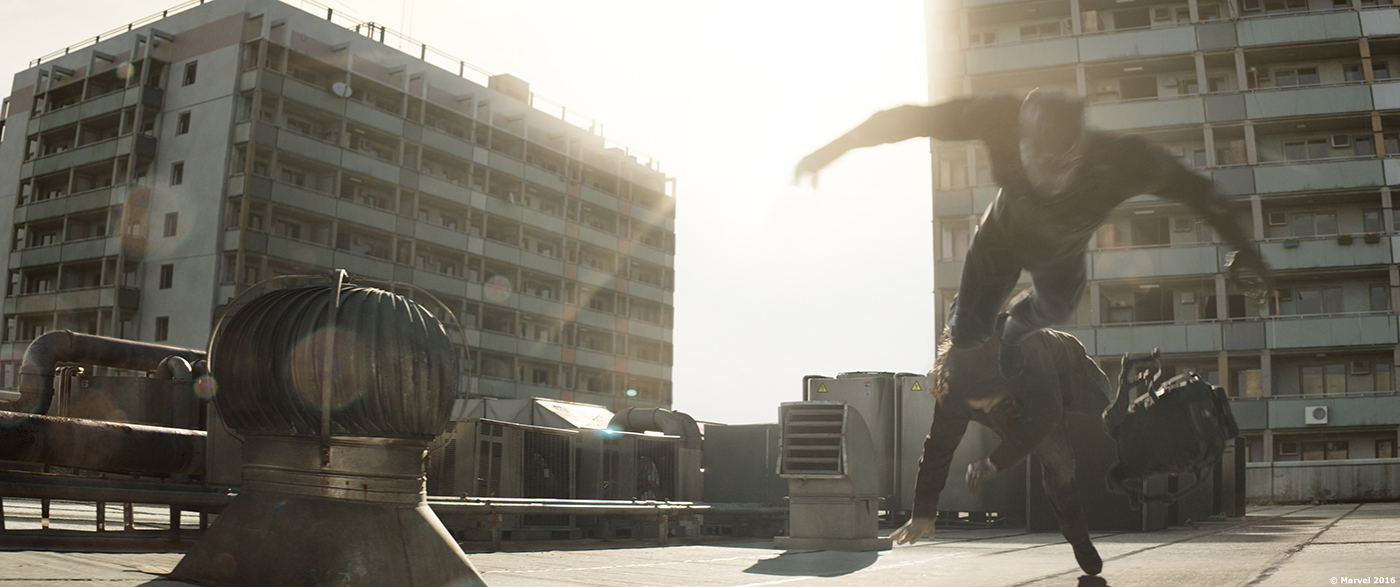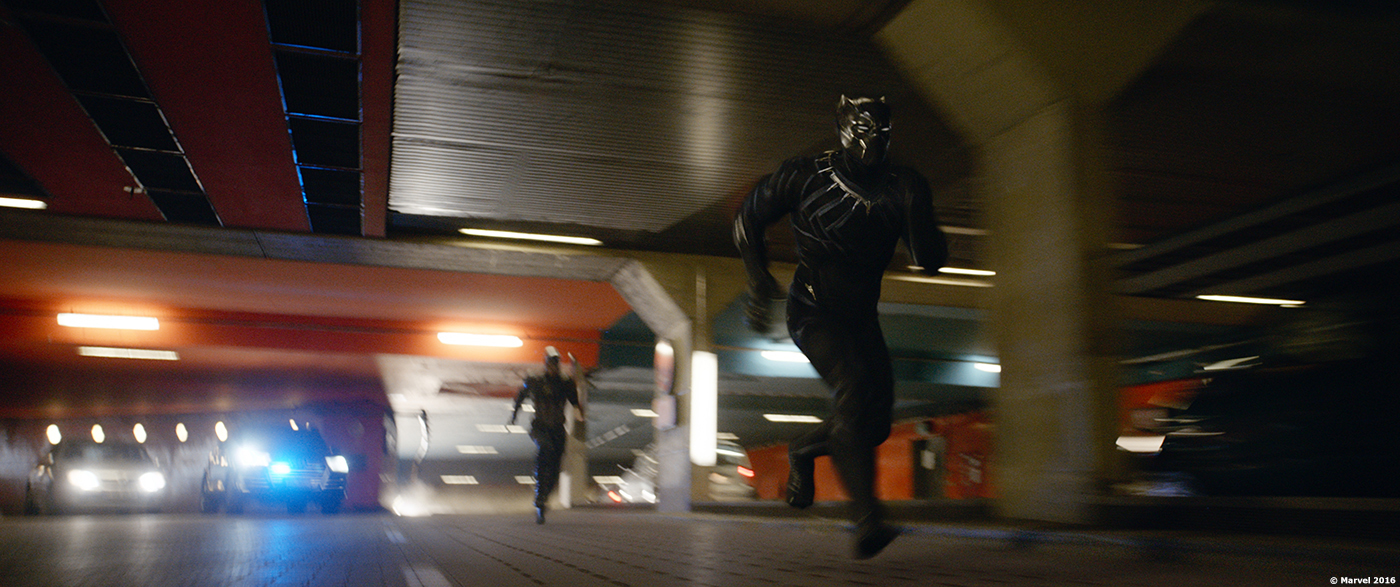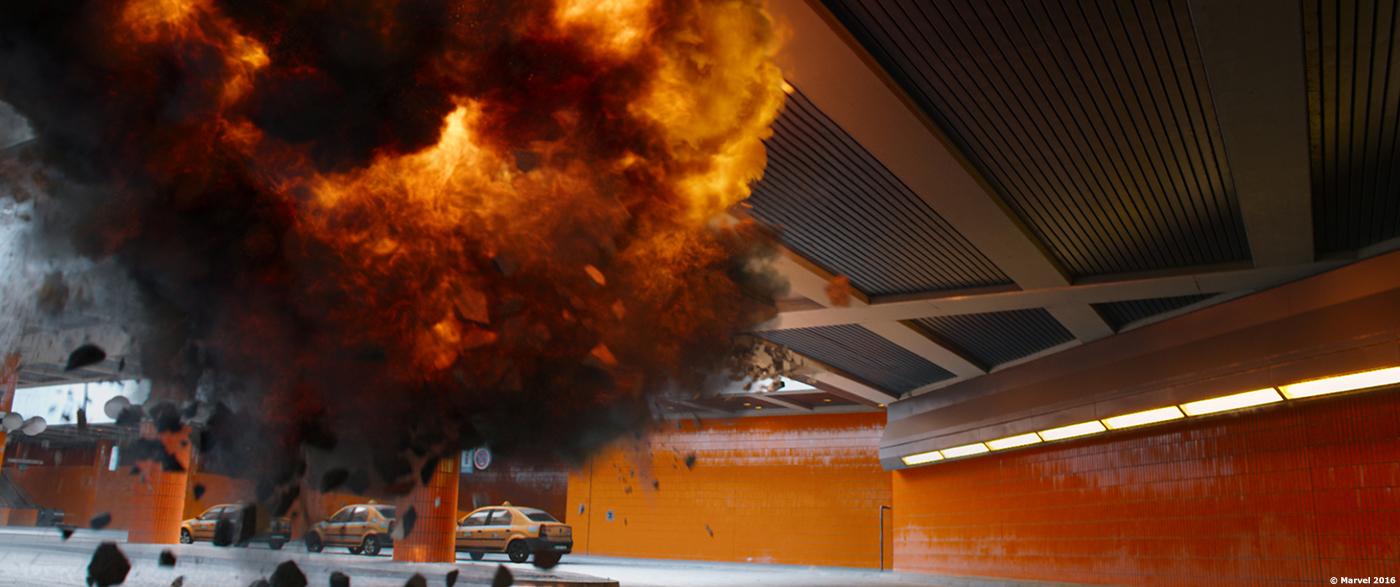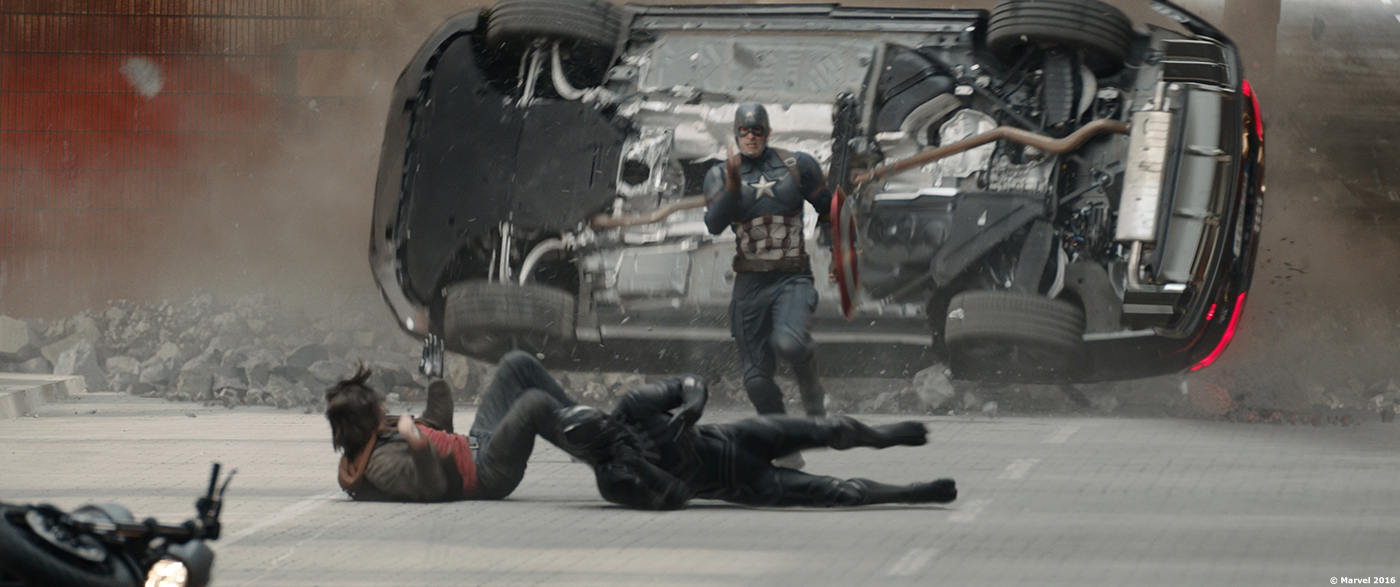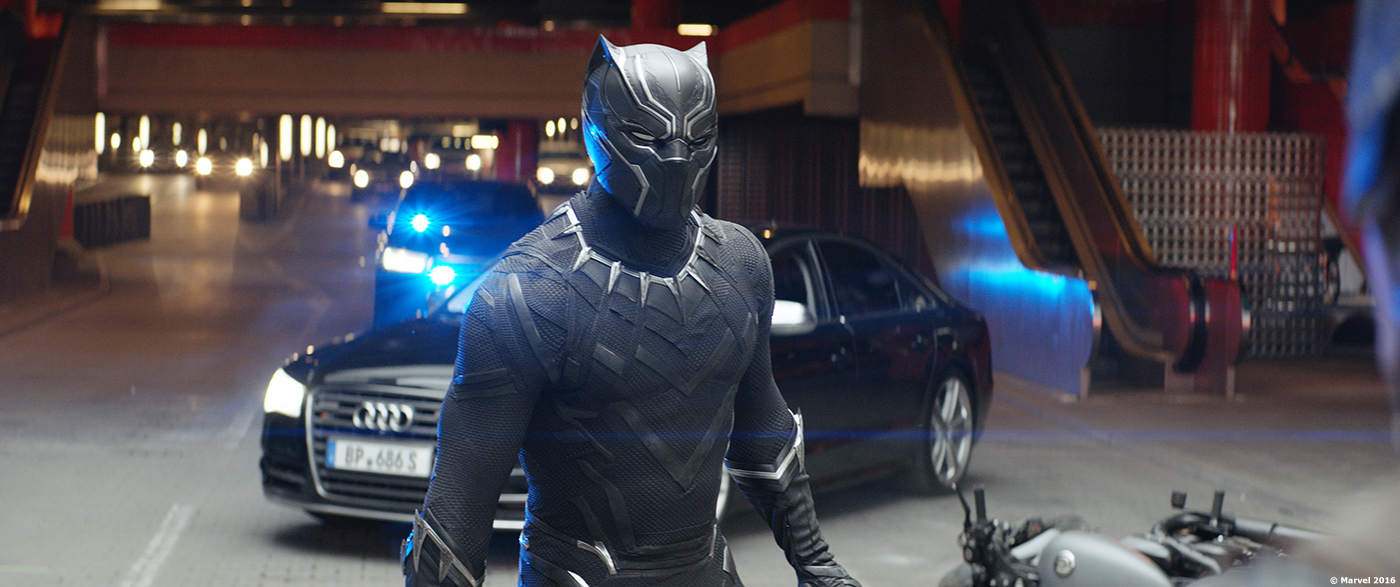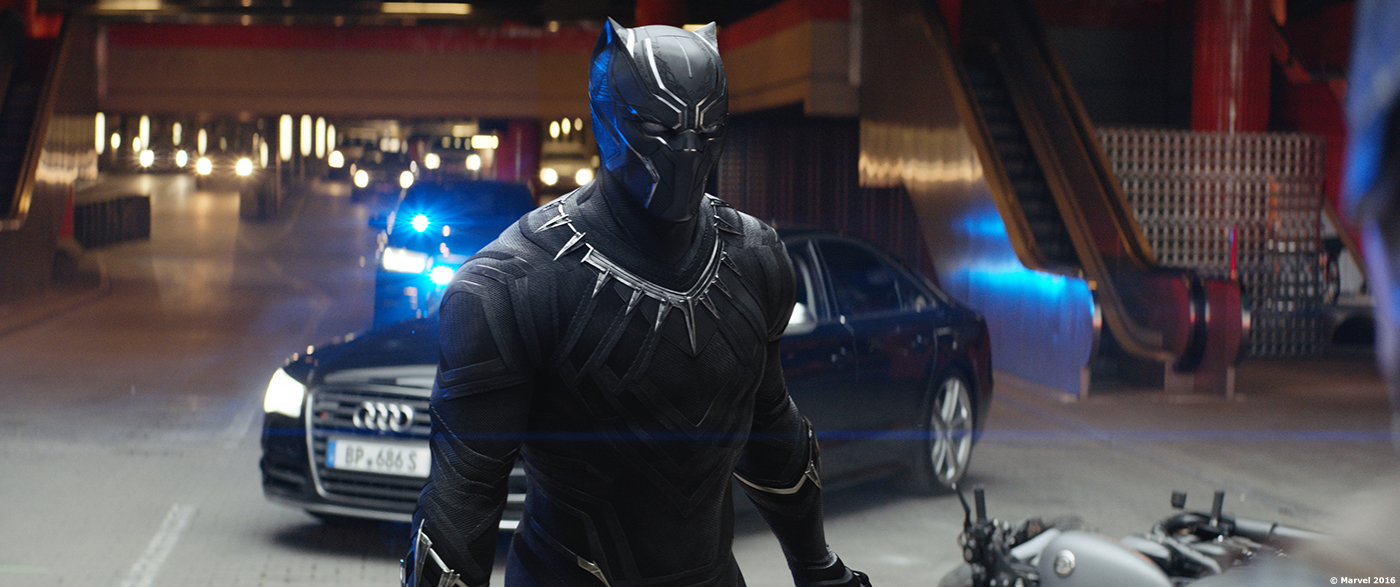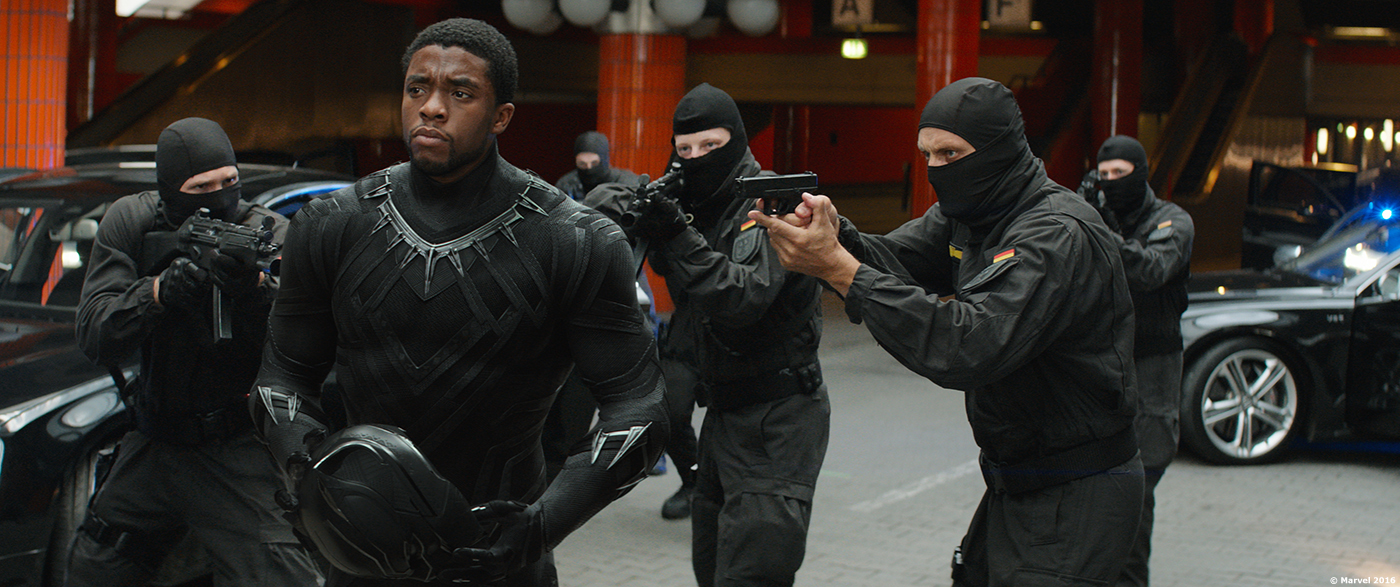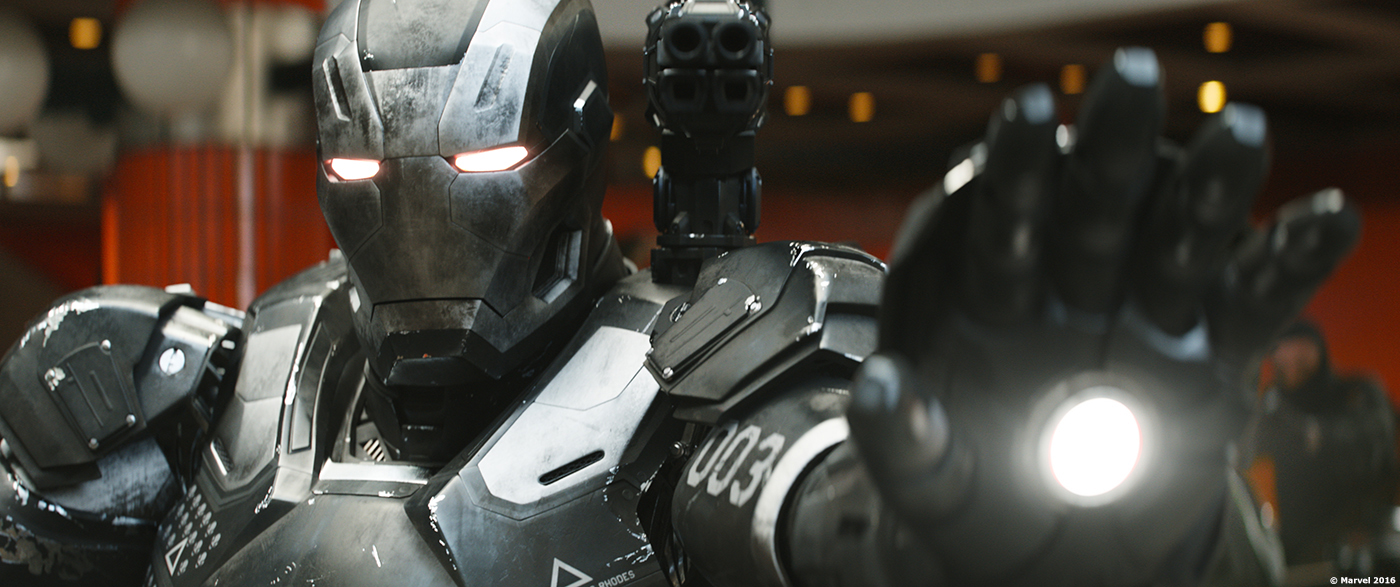In 2013, Alessandro Cioffi talked in detail about the work of Trixter on IRON MAN 3. He then worked on films such as WHITE HOUSE DOWN and PIXELS but especially on many Marvel films like CAPTAIN AMERICA: WINTER SOLDIER, AVENGERS: AGE OF ULTRON and ANT-MAN.
What was your feeling to work again with the Russo Brothers and VFX Supervisor Dan Deleeuw?
Great excitement. Like last time on the WINTER SOLDIER, we didn’t know much about the rest of the movie, other than the sequences we were working on. Going to the theatre to see the final result just confirmed our impression of having been part of something big. This time the Brothers brought something even cooler on screen, in my opinion, for all of us to be proud of.
This new Captain America have a bigger scale. Does that change their approach about the VFX?
I don’t think so. They’re more than familiar with big scale effects and their confidence reflects well on screen. I think the main difference might have been the large amount of characters, each of those requiring much care and work, in all aspects.
Can you describe to us one of your typical day during the pre-prod, on-set and then on post?
We didn’t do pre-prod this time however I can tell you about the long days spent on set at the ICC in Berlin shooting the long chase sequence, back in August. Simone Kraus and I were kindly invited by Jen Underdahl to assist Dan Deleeuw and Swen Gillberg in the act of supervising the VFX for the sequences we were awarded.
I like to use the term “witness”, as it was a great experience to support them on such a huge set.
As you’ve seen from the movie the sequence is very dynamic, and so we had to be: hundreds of kms walked up and down the “Tunnel” following the action, so to speak! In the steaming August heat!
Back in the studio in Munich, my life is way more sedentary: just a couple dozen stair trips up and down, daily, to follow my review routine after our daily production meeting: assets first, animation and environment then lighting and compositing at the end of the day. In the evening we usually met with the client via conference call and cineSync. The day normally closes with a team recap of the day, often over a beer.
What were the sequences made by Trixter?
We have worked on the long sequence where Bucky runs from his apartment in Bucharest, fighting his way through the staircase and the rooftop, where we first meet the Black Panther, up to his arrest in the city tunnels.
How did you approached and pre-visualized this long sequence?
What we soon realized was that the scope of work naturally pooled groups of contiguous shots in term of assets, techniques and approach. Besides the ‘camera’ travels from one point A in space to a point B, literally. This has suggested us to proceed linearly from the first group of shots in the sequence to the very last one, featuring the tunnel destruction, allowing all of our artists to commonly focus on assets, locations and effects and guarantee high consistency in the quality. There have been exceptions though.
Can you explain in details your work on the staircase part?
First off the staircase needed an extension. On the Atlanta set only three stories were built, but the building was meant to be a 20 plus storeys one. Based on a Lidar scan of the set, we rebuilt the whole staircase for all angles looking up or down. In addition to that we animated GSG9 officers climbing up and populating the scene, with an eye on the prominent “hero” GSG9 which Bucky uses as a trapeze.
But the main work was replacing Bucky’s mechanical hand (Sebastian Stan was wearing a marked black glove on set) and Captain’s vibranium shield. The shield has been revisited, again, for the show and it appears shinier, slicker and stronger this time.
Last, but absolutely not least, we had to remove the web of safety wires the stunts used, the rigs and the cameras everywhere.
How was filmed this part of the sequence?
As mentioned a section of the staircase has been built on a park lot in Atlanta, with one of the four walls conveniently removable and hiding technical floors for cameras and crews for the most angles.
All stunts were wired so they could safely perform their acrobatics, jumping from one floor to the other. Cameras were strategically placed everywhere to capture the actions from multiple angles, all for the joy of our prep artists.
In many shots a practical shield was captured in camera to be replaced, always useful for reference.
Can you tell us more about the creation of the digital doubles, the CG shield and Winter Soldier arm?
On this production we have used CG doubles provided by other vendors for the main characters. Our asset work focused on -many- other elements like the GSG9 officers, hero chopper, environmental elements, CG cars etc.
The sequence is featuring buildings and environment. How did you created them?
We based the look on reference imagery captured in Halle. The client wanted to give the ICC surroundings a sort of east-Europe aesthetic and Halle provides that type of architecture. After a general layout to asses building density and positions, we modelled and textured all the hero buildings for all the most dynamic cameras. In some other shots, where the cam is more static, we could use a so called 2,5D approach, re-projecting DMPs on basic geometries.
The chase moves to a tunnel with heavy car traffic. How did you populated it with CG cars?
Our CG cars have been very useful to fill traffic gaps, due to shooting needs, or to cover rigs and crews showing up in the background. We created a variety of about 15 models, which were then used in different colours, all featuring that type of eastern look.
The heroes can run super fast. How did you created this effect?
Dan Deleeuw had this idea of letting the stunts run on long stripes of material, about 20 meters, attached behind cars and rigs: the effect being our hero running at super soldier speed. There was a concern about seeing them sliding on the ground once the so called ‘magic carpets’ had been digitally removed, but I must say in the final shots the effect works really well.
Many destructions and explosions happens during the chase. Can you tell us more about these FX?
Some practical effects have been captured in camera for reference and most of all for cueing the action. The rest you see on screen has been simulated in Houdini and rendered with Mantra.
You see Cap’s car flipping over some we defined ‘hero stones’. Those needed to be art directed and combined with the rest of the simulation. More precisely, after having animated the two big beam broken parts, heavier and faster than the rest of debris, we’ve let the simulation run using them as collision objects. We had to simulate the action many times, to keep it consistent as the edit kept changing from week to week.
Was there full CG shots in your sequence and how did you created them?
Yes quite a few. The film makers were really precise and specific during pre-viz, therefore our work was facilitated by closely referring to them. Eventually a full CG doesn’t differ much to a LA/CG combined one in the approach. We had all environments built for the rest of the sequence, whereas the foreground animation might possibly get more under the magnifying lens during reviews. Other than that they didn’t present any specific complications. They are fully rendered with Arnold, through Katana.
What was the main challenge for you and how did you achieved it?
The schedule was tight. Specifically the decision of having a fully rendered CG Black Panther arriving pretty late in production. We had to revisit our internal schedule and crank up an unforeseen number of animations in a short time, while pushing on its LookDev. What matters is that this gorgeous character appears consistent through the whole movie.
Was there a shot or sequence that prevent you from sleep?
None really. It has been a fun production, bumpy at times but thrilling and exciting in the end. We try to keep a light atmosphere in the studio, under any circumstances.
What do you keep from this experience?
I’ve seen director Spyros Razatos and the Malaka Stunts team at work. A real spectacular experience that will remain in my best memories.
How long have you worked on this film?
Practically from November 2015 to April 2016.
How many shots have you done?
About 340 in the cut, many more including omits and trailers.
What was the size of your team?
We touched 93 at one point from 18 different countries.
What is your next project?
Hush-hush…
A big thanks for your time.
// WANT TO KNOW MORE?
– Trixter: Official website of Trixter.
© Vincent Frei – The Art of VFX – 2016



